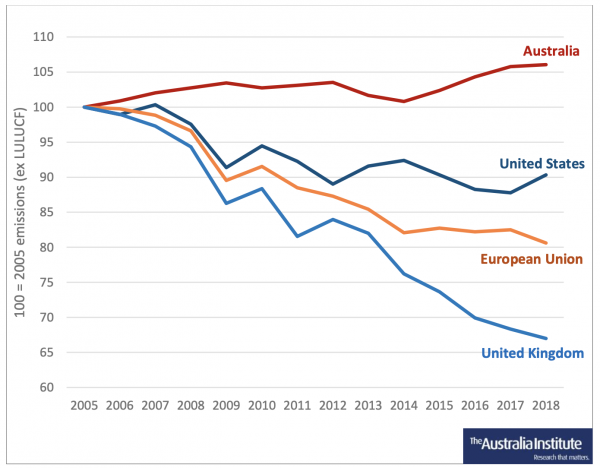Banking on Australia’s Emissions
Authors
Media releases
New Analysis: Australia doing less than other countries on climate
The Australian Government claims that Australia has reduced its emissions by 19 per cent on 2005 levels and is on track to ‘meet and beat’ its Paris commitments. This claim relies on creative accounting and historical drops in emissions that are unrelated to government policy and do not underpin a net zero trajectory.
In a strident address to world leaders at the Leader’s Summit on Climate on 22 April 2021, Prime Minister Scott Morrison announced that by reducing its emissions by 19 per cent on 2005 levels, Australia is on track to ‘meet and beat’ its Paris commitments. He also stated that our reduction is ‘more than most other similar economies’1 and that ‘Australia is on the pathway to net zero’.2
In reality, Australia’s emissions are rising. The reductions the Australian Government is laying claim to are largely related to historical changes in the land sector confined to a very specific timeframe, as well as the impact caused by two major exogenous shocks: the 2017-2019 drought and the COVID-19 pandemic.
When historical land sector changes and the effects of the drought and pandemic are removed it quickly becomes evident that, contrary to the Prime Minister’s assertions, Australia has made minimal progress towards net zero and its emissions trends are among the worst in the developed world. While all members of the Group of Seven (G7) have committed to deeper emissions cuts, Australia is being left behind both on ambition and performance.

In this paper we provide a more credible basis from which to judge Australia’s progress and compare Australia’s emissions trend against that of similarly developed countries. This demonstrates that, while most other developed economies have reduced their emissions since 2005, Australia’s emissions have risen.
We then provide an explanation of the causes of reductions in net emissions from the land sector and outline how the Australian Government has strategically taken advantage of years high in deforestation emissions when setting climate targets to conceal the lack of progress in transitioning to a low carbon economy.
Finally we outline the impact of the drought and the pandemic on Australia’s emissions in 2020, explaining why the decline in reported 2020 emissions should not be used as a marker of progress.
